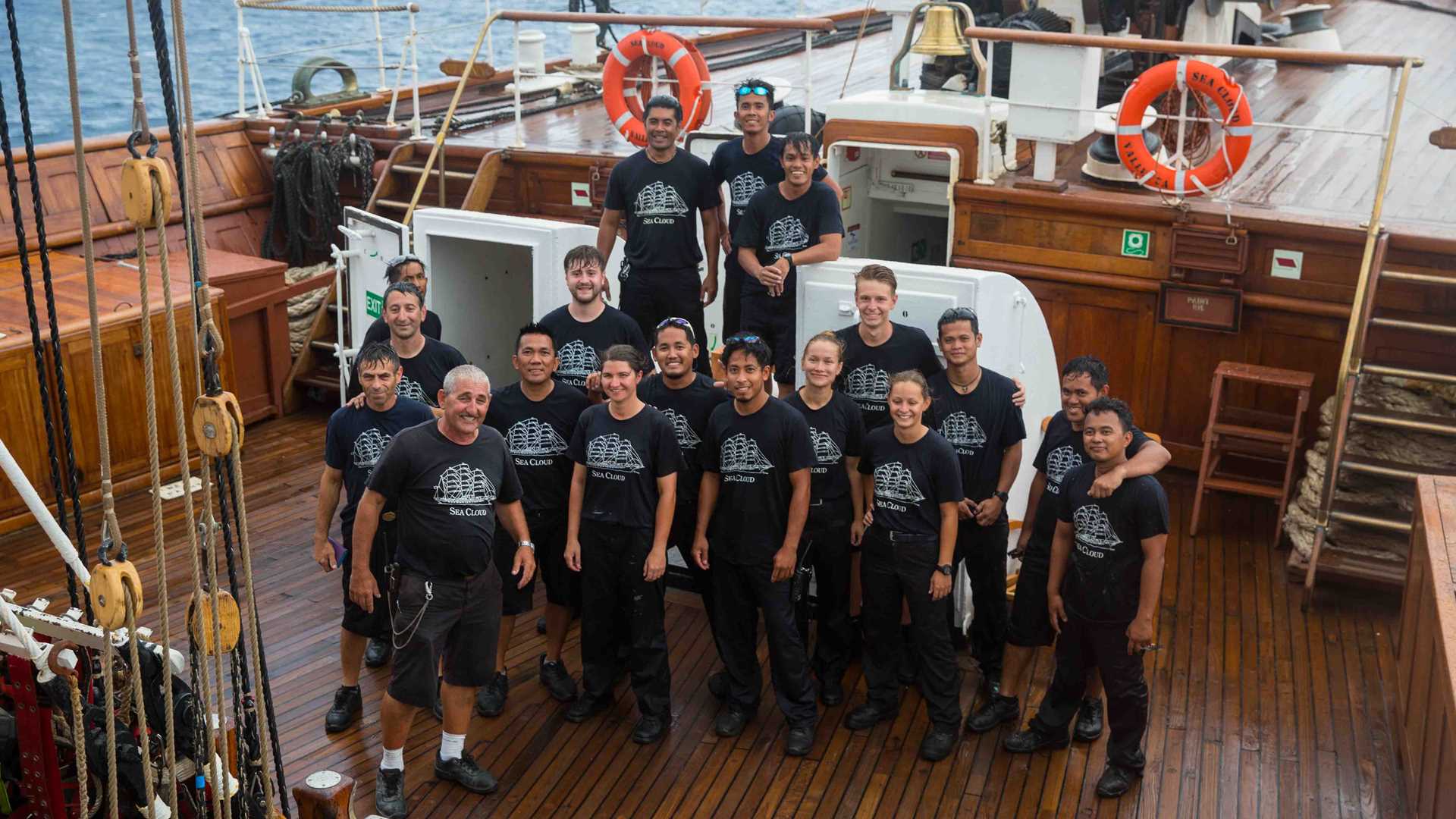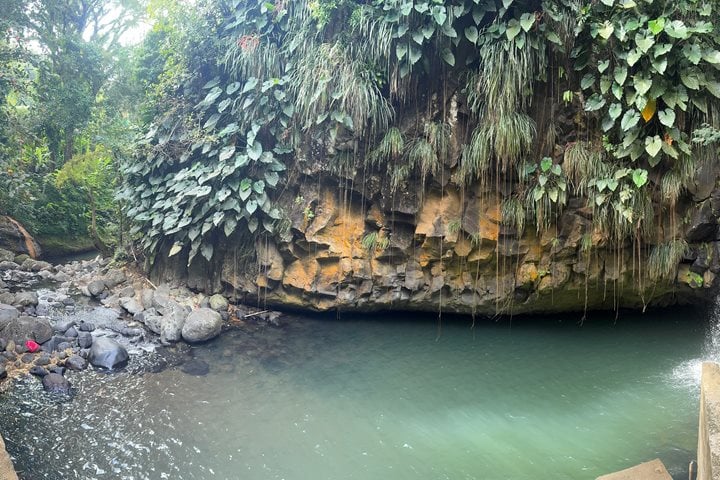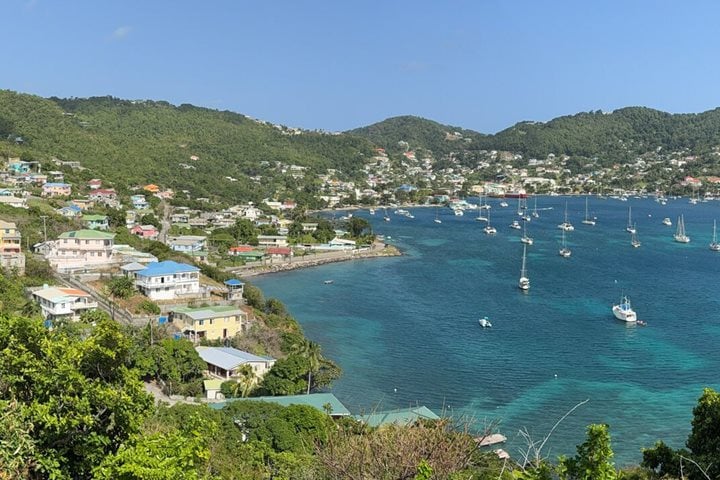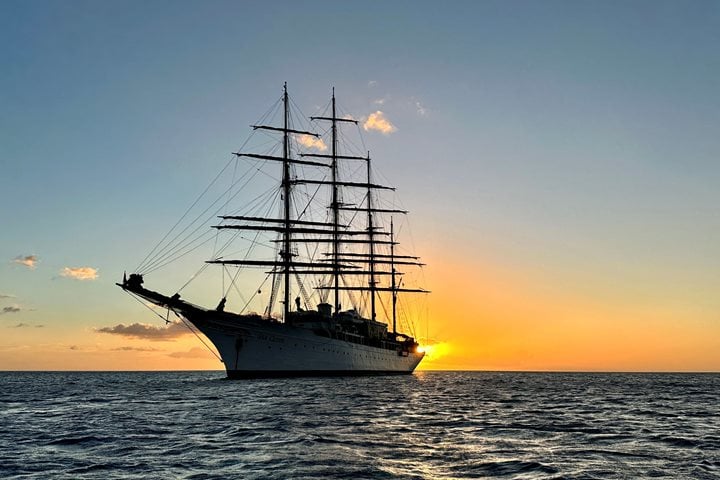One of the nicest things about sailing the Caribbean in the winter months is that you can count on the easterly trade winds to blow 10–20 knots of warm tropical air for predictable and pleasurable sailing. But after embarking the gorgeous and legendary tall ship Sea Cloud in Antigua last night with almost no wind, we were advised that our first day of sailing would be with light winds coming unusually from the west. But forecasts are only forecasts . . .
“Light winds on a square-rigger means lots of sails,” the expedition leader encouraged the eager guests gathered on the Spanker Deck at 8:45 a.m. for a play-by-play description of the setting of the sails, “and the captain plans the sail configuration based on the predicted wind directions and the speed and course he wants to make for the day.” We studied our sail diagrams of the 4-masted barque Sea Cloud, learned the difference between square sails and stay sails and jibs and gaff sails, and waited for the crew to climb the rigging to set the sails. But the sky was dark and there looked to be rain approaching from the west. Captain Komakin and the expedition leader tried to continue on our planned path, but eventually it was decided to change course in hopes of finding fairer weather.
The the improvised course worked and we finally got to see the crew “hit the rig” and go aloft to lose the gaskets and then set sails. What a sight it was, as we moved forward to the fo’c’sle to watch the setting of the jibs! “We certainly won’t be setting any speed records today,” cautioned the expedition leader, “but a square-rigger carrying 1000 tons at even a few knots was by far the most efficient way to move cargo until the development of rail and the steam engine. We sat back to enjoy Sea Cloud sailing at a patient 2 knots in a very light wind, but clearing skies nonetheless.
Then, suddenly and unexpectedly the wind picked up from the west at lunch time. The sails filled, we were creating a wake, gaining speed, and heeling to port. This is what we came for! We were sailing hard on a square rigger, and Captain Komakin announced that we would be setting the enormous spanker sail after lunch. We were now all captivated by the glory of true square-rig sailing right here in the 21st century on this beautiful and historic sailing ship, and we settled in for the afternoon to make the most of it with the islands of Guadeloupe and Dominica to our port side. It was an ideal afternoon, sailing at 6 knots and enjoying the custom-made crepes from the ship’s baker Samuel until the sudden call came from the bridge that another rain squall was coming in quickly from the west and we would scramble to strike the sails before it hit.
Clew up the square sails! Haul down the stay sails! Run the jibs! The crew flew into action and lines were flying everywhere as yardarms dropped and the wind increased and the sky darkened. All three mast teams returned to the decks to haul in the heavy wet spanker sail to the applause of the guests before finally retiring to a warm shower and a well-earned meal, and we guests stood in disbelief that we were part of an age-old art of sailing tall ships at the mercy of the elements. We’ve gotten our sea legs, and we can’t wait for more.









